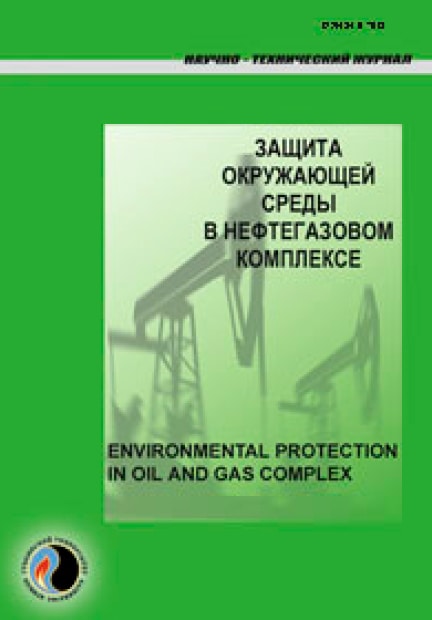Application of neural network to assess the level of employees occupational safety culture
UDC: 614.8.084
DOI: -
Authors:
GLEBOVA ELENA V. 1
1,
VOLOKHINA ALLA T. 1
1,
KOROBOV ANTON V. 1
1,
BAKLAZHENKO KRISTINA V. 1
1
1 National University of Oil and Gas "Gubkin University", Moscow, Russia
Keywords: industrial safety culture, safety, industrial safety, occupational safety, methodology, neural networks
Annotation:
The authors of the article describe a new idea implementation of using a neural network to assess and analyze the level of employees’ industrial safety culture, occupied in oil and gas producing enterprises of the Russian Federation. The initial data included the results of employees’ questionnaire according to the methodology developed by scientists of the Department of Industrial Safety and Environmental Protection of the National University of Oil and Gas "Gubkin University". As a result, the level of industrial safety culture (ISC) has been determined for both each employee and for the oil and gas production enterprise in general. For the first time the possibility of assessing the level of industrial safety culture based on the socio-biographical characteristics of employees has been revealed. Correlation dependence between the ISC level, obtained in the course of the traditional research and determined by the neural network has been established by means of using Loginom software product, which is based on neural network algorithms.
Bibliography:
1. Boughaba A., Hassane C., Roukia O. Safety Culture Assessment in Petrochemical Industry: A Comparative Study of Two Algerian Plants // Safety and Health at Work. – 2014. – Vol. 5, Issue 2. – P. 60–65. – DOI: 10.1016/j.shaw.2014.03.005
2. Deetz S. How to Build Strong Global Safety Culture in Practice: Presentation. – URL: https://gnssn.iaea.org/NSNI/SC/WS_ GSC/Presentations/28%20Deetz_Stanley_Strong%20Global%20Safety%20Culture.pdf (data obrashcheniya 20.01.2024).
3. Otchet o deyatel'nosti Federal'noy sluzhby po ekologicheskomu, tekhnologicheskomu i atomnomu nadzoru v 2022 g. – URL: https://www.gosnadzor.ru/public/annual_reports/Пр-423%20от%2024.11.2023%20Годовой% 20отчет%20.pdf (data obrashcheniya 20.01.2024).
4. Houette B., Mueller-Hirth N. Practices, preferences, and understandings of rewarding to improve safety in high-risk industries // J. of Safety Research. – 2022. – Vol. 80. – P. 302–310. – DOI: 10.1016/j.jsr.2021.12.013
5. Volokhina A.T., Glebova E.V., Vorob'ev P.S. Analiticheskiy obzor sushchestvuyushchikh metodov otsenki kul'tury bezopasnosti predpriyatiy // Zashchita okruzhayushchey sredy v neftegazovom komplekse. – 2023. – № 5(314). – S. 28–36. – DOI: 10.33285/2411-7013-2023-5(314)-28-36
6. Ayob A.N., Che Hassan Che R., Hamid M.D. Safety culture maturity measurement methods: A systematic literature review // J. of Loss Prevention in the Process Industries. – 2022. – Vol. 80. – Article No. 104910. – DOI: 10.1016/j.jlp.2022.104910
7. Monitoring sostoyaniya kul'tury proizvodstvennoy bezopasnosti v PAO "Gazprom" na osnove nezavisimoy vneshney otsenki / D.V. Ponomarenko, E.Yu. Makhmutyanova, E.V. Glebova [i dr.] // Gazovaya prom-st'. – 2023. – № 8(852). – S. 38–46.
8. Artificial Neural Networks for Renewable Energy Systems and Real-World Applications. – 1st Edition / A.H. Elsheikh, M.A. Elaziz (editors). – Academic Press, 2022. – 290 p.
9. Analiticheskaya platforma Loginom. – URL: https://loginom.ru/ (data obrashcheniya 15.02.2024).

